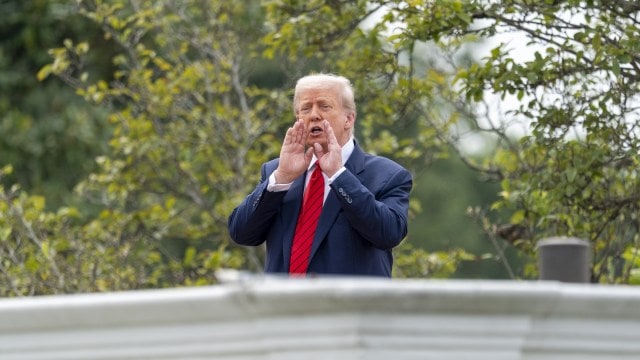
The American tariff tantrum has arrived on India’s shores, and we must not panic. On August 6, President Donald Trump signed an executive order doubling the already declared 25 per cent duty to 50 per cent on every Indian product entering US ports — from diesel and diamonds to t-shirts and turmeric alike. India has 21 days before the additional 25 per cent takes effect.
America buys nearly a fifth of what we export, worth $87 billion last year. A blow this size can rattle factory floors, shake the rupee, and spook investors. Yet, India must view this punch as negotiable, and respond with calm, clarity and a plan. To be effective, we must first understand why India faces 50 per cent tariffs — almost the highest in Trump’s global trade war.
Reading between the lines, this represents high-stakes bargaining rather than permanent hostility. However, given the grip of tariff primacy in the White House and personality clashes between world leaders, New Delhi must prepare for tariffs to persist even after negotiations.
First, Delhi must target specific exemptions, not blanket relief. Reports suggest America has already granted over a trillion dollars in tariff exemptions. India should claim its share. Pharmaceuticals and smartphones appear exempt for now; we must push to include textiles, jewellery, and electronics. Second, it must mobilise allies within the US. Tariff walls often crack from within. American retailers facing expensive Christmas inventory will protest. We should feed them hard numbers showing how tariffs will increase US inflation and hurt American consumers. Third, India should prepare retaliation, but hold fire: Publish a list of politically sensitive US exports worth billions — California almonds, Washington apples, Wisconsin motorcycles. Announce duties will apply only if talks fail. The threat alone creates pressure.
Four, bundle tariff reductions on luxury goods and automobiles with concessions America values: Increased purchases of US natural gas and controlled access for American financial technology firms. These don’t compromise core interests while giving Washington an off-ramp. Five, while keeping strategic ties separate from trade disputes makes sense, Delhi has cards to play. Multi-billion-dollar drone purchases and the landmark GE-HAL fighter engine deal can proceed more smoothly once tariffs disappear — a carrot without weakening our Indo-Pacific deterrence. Six, India should support vulnerable sectors and extend credit to export-focused small businesses and boost incentives for garments and pharmaceutical companies. These are temporary bridges, not permanent subsidies.
Finally, it must manage personalities pragmatically. India must defend its dignity and strategic autonomy while protecting economic interests. Direct dialogue between Modi and Trump could help, even if core disagreements remain.
Beyond immediate tactics lies a larger chessboard. India cannot yield on agriculture and dairy — these sectors support hundreds of millions of livelihoods and ensure food security. What it must do is build coalitions with countries facing similar tariffs: Vietnam, Bangladesh, Brazil, and even close US allies like the EU and Japan. And, despite the current frost, even China. With the WTO proving ineffective, new partnerships must emerge.
Consider adopting China’s proven workaround: Use Mexico and Canada as intermediate stops. A medical device manufactured in Gujarat, minimally processed in Tijuana, then shipped to Houston, faces Mexican rather than Indian tariffs. We sacrifice small margins for crucial market access.
Export diversification becomes essential. With the US taking 20 per cent of our merchandise exports, over-dependence creates vulnerability. Fast-track the pending EU trade agreement, implement the recent UK deal, and expand ties with Gulf countries and Latin America.
India’s ace remains our services sector, largely exempt from tariffs. Information technology and business services to the US generate massive revenues through people-to-people connections rather than shipping containers. The rise of Global Capability Centres — where American firms build their largest non-US offices in India — deepens this integration.
This model, built on Indian talent globally, must expand further. As technology blurs manufacturing and services boundaries, being embedded in critical knowledge chains worldwide increases our leverage beyond any tariff’s reach.
Trade disputes are now permanent features of global politics. The world’s largest economy is willing to weaponise market access, and global supply chains will keep re-routing in search of certainty. For India, the answer is not panic, nor a stunt of hyper nationalism, but methodical statecraft: Negotiate firmly, build alliances, diversify always, and prioritise domestic competitiveness.
This crisis could catalyse necessary changes. India might finally reduce its own high tariffs selectively, making our exports more competitive globally. We could accelerate manufacturing reforms that have been delayed for decades. Most importantly, we could build economic resilience that doesn’t depend on any single nation’s goodwill.
Deng Xiaoping’s wisdom — “hide your strength, bide your time”— applies perfectly today. Avoid confrontation while building capabilities. Remember, leaders change, nations endure. With pragmatic planning, this tariff tantrum will be remembered not as a wound, but as the push that launched Indian trade strategy into its next, more confident phase.
The American market matters, but India’s growth story doesn’t depend on it alone. It has domestic demand, global diaspora networks, and emerging partnerships worldwide. And eventually, dignity and sovereignty, as Pratap Bhanu Mehta argued in these pages (‘Against imperialism’, IE, August 5), matter above all. Stay calm, negotiate smartly, and keep building. This too shall pass, leaving India stronger and more self-assured.
The writer is assistant professor of economics at Cornell University and the co-author of Breaking the Mould: Reimagining India’s Economic Future